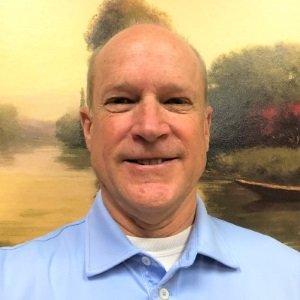To address the growing population and projected water demand over the next 30 Years, HCWA recently completed a master plan update that includes two booster pump stations – the Fairview booster pump station and the Southeastern booster pump station.
Due to the elevation, part of the area near the Fairview booster pump station was being fed from another county. The water treatment plants are in the southern portion of the county, so it would take 30 to 40 miles of transmission to get to the higher-elevated northern portion.
Additional transmission mains
Instead of installing additional transmission mains and an elevated tank with booster pumps, the authority decided to go with a booster pump station with emergency pressure reducing valves at the neighboring county. With the station boosting pressure from the southern part of the county to the north, HCWA is now able to provide its own water to all its customers.
In addition to enhancing the facility, HCWA wanted to keep its neighbors in mind
In addition to enhancing the facility, HCWA wanted to keep its neighbors in mind. The Fairview station is located next to a school with commercial properties and residential areas nearby. To make the station fit in with the landscape, HCWA used a faux-brick exterior. Utilizing an in-house design, a booster station package by Gorman-Rupp was put together that included pumps, controls and enclosures. Due to the packaging, not a lot of multidisciplinaires had to get involved.
Production variable rate
After 18 months in operation, the station is working 24/7 without any reported issues. If a second or third pump needs to be kicked on, the station automatically handles it. Kelley said being able to supply the area with its own production variable rate instead of having to pay a premium from another municipality will save money and is projected to recoup the cost of the project within 5 years.
The primary purpose of the Southeastern booster pump station will be to transfer water between pressure zones. The pump station has 250 horsepower pumps, which gives a lot more flow than the Fairview station, which has 25 horsepower pumps. There are currently two pumps planned, but there is a spot for a third pump when needed.
Lower hydraulic grade line
This station boosts pressure from the eastern portion of the county to the central and western portions
This station boosts pressure from the eastern portion of the county to the central and western portions. “To be able to get water out of one zone, which is at a lower hydraulic grade line than the other, and be able to pump to our larger zone was critical for redundancy within the distribution system and future planning,” Kelley said.
Compared to the Fairview station, which mostly operates on its own, the Southeastern station will be more control-based. When planning the Southeastern station, the HCWA looked to its other stations to see what could be improved upon. “What if we started running into problems, due to a failure? How do we get water out of that zone? What’s our form of redundancy?” Kelley said. With the projection of water demand doubling in size over the next 30 years, Kelley predicts they will add the third pump as that time gets nearer.
High-Ceiling split
At that point, they plan to have one of the pumps running all the time. The Southeastern station is in a more remote area than the Fairview one with no commercial properties around, and subdivisions a bit farther away. This station was built with a high-ceiling split.
The Southeastern station is in a more remote area than the Fairview one with no commercial properties
While updating the 30-year master plan, the initial thought was to use tanks, but after reviewing the hydraulic modeling, Kelley thought of the booster pump stations. HCWA turned to Gorman-Rupp for its pump and equipment needs. In addition to their long-standing relationship, the third-party consultant for the Southeastern station was able to see the booster station concept on the Gorman-Rupp production floor during a factory trip, which Gorman-Rupp offers to potential customers.
Booster pumping systems
With Gorman-Rupp being responsible for the Fairview and Southeastern stations, they offered a 60-month warranty on the booster pumping systems. Additionally, as a duplex/future triplex, the Southeastern station has capacity for continued growth in the county.
Allen Walker, Sales Engineer for Gorman-Rupp distributor Templeton & Associates, said: “By sourcing pumps from Patterson and then Gorman-Rupp applying their other in-house components, enclosures, engineering expertise, it pretty much made it easy to put it all together and also make sure that the extended warranties were basically kept under one roof.”
















